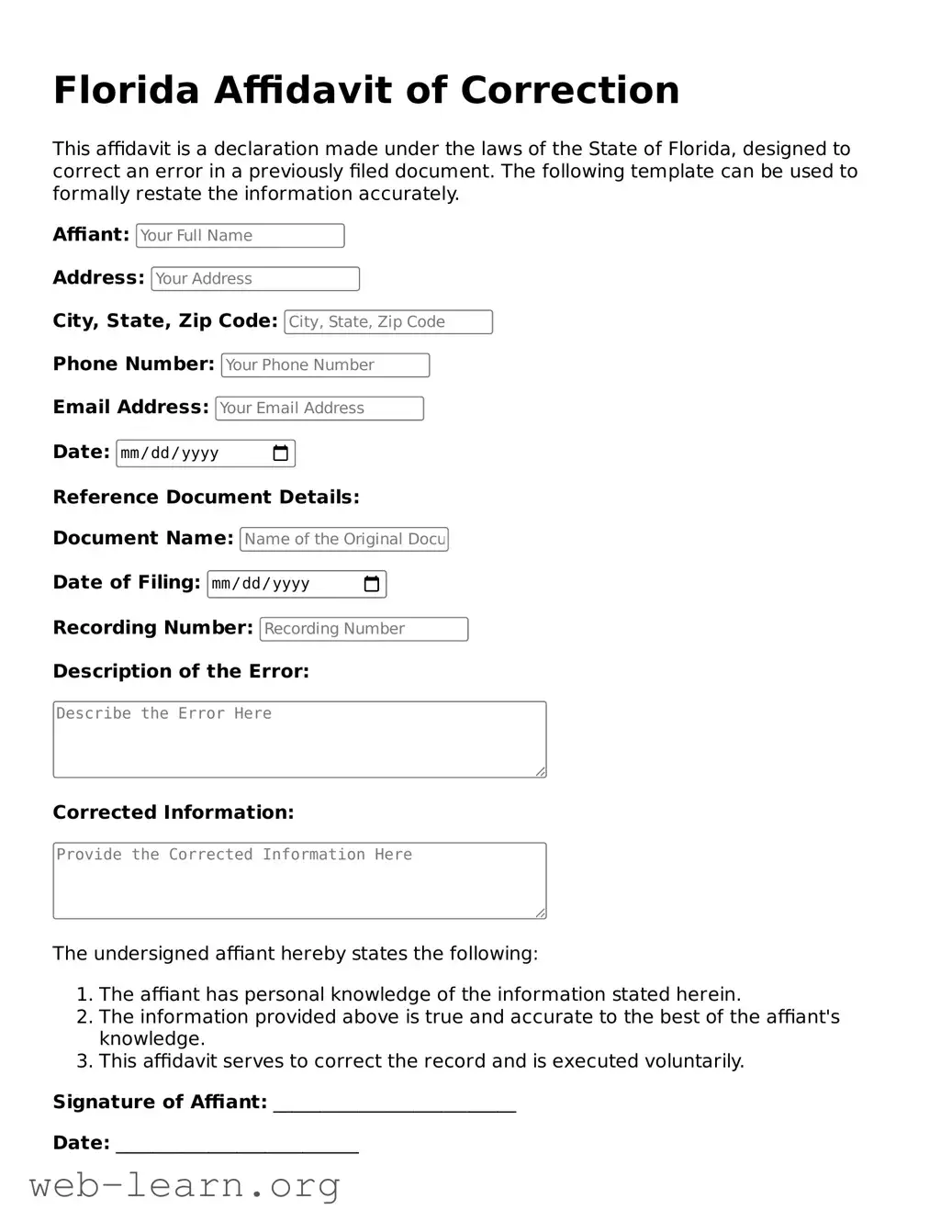Attorney-Approved Affidavit of Correction Document for the State of Florida
The Florida Affidavit of Correction is a legal document designed to rectify errors in public records. This form allows individuals to officially correct mistakes in documents such as deeds, mortgages, or other important filings. By using this affidavit, a clearer and accurate public record can be established, ensuring that vital information is reliable and up-to-date.
